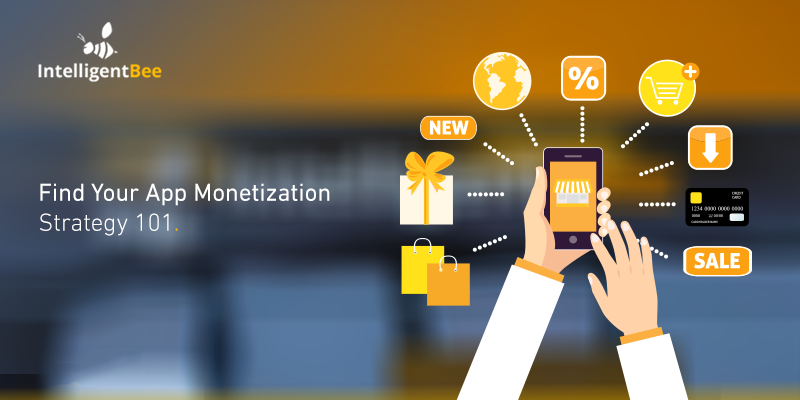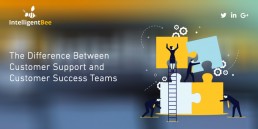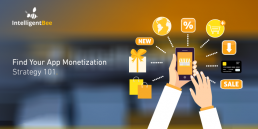Everyday inspired by the Beauty of the Mountains
Take your time.
I’ve got a Fujifilm X100s. It runs about $1300. It’s easily the best camera I’ve ever owned. I take care of it as best as I can, but I don’t let taking care of it impact the photography. Let me elaborate on that a bit better. You’ll get better at each section of what we talked about slowly. And while you do, you’ll be amazed at how much easier it all is and how the habit forms. The best way to get better at photography is start by taking your camera everywhere. If you leave your house, your camera leaves with you. The only exception is if you’re planning for a weekend bender — then probably leave it at home. Other than that, always have it slung over your shoulder. It would probably help to get an extra battery to carry in your pocket. I’ve got three batteries. One in my camera, one in my pocket, one in the charger.
When it dies, swap them all.
For me, the most important part of improving at photography has been sharing it. Sign up for an Exposure account, or post regularly to Tumblr, or both. Tell people you’re trying to get better at photography. Talk about it. When you talk about it, other people get excited about it. They’ll come on photo walks with you. They’ll pose for portraits. They’ll buy your prints, zines, whatever.
Clouds come floating into my life, no longer to carry rain or usher storm, my sunset sky.
— Rabindranath Tagore
Breathe the world.
I’ve got a Fujifilm X100s. It’s easily the best camera I’ve ever owned. I take care of it as best as I can, but I don’t let taking care of it impact the photography. Let me elaborate on that a bit better. You’ll get better at each section of what we talked about slowly. And while you do, you’ll be amazed at how much easier it all is and how the habit forms. The best way to get better at photography is start by taking your camera everywhere. If you leave your house, your camera leaves with you. The only exception is if you’re planning for a weekend bender — then probably leave it at home. Other than that, always have it slung over your shoulder. It would probably help to get an extra battery to carry in your pocket. I’ve got three batteries. One in my camera, one in my pocket, one in the charger. When it dies, swap them all.
For me, the most important part of improving at photography has been sharing it. Sign up for an Exposure account, or post regularly to Tumblr, or both. Tell people you’re trying to get better at photography. Talk about it. When you talk about it, other people get excited about it. They’ll come on photo walks with you. They’ll pose for portraits. They’ll buy your prints, zines, whatever.
Heavy hearts, like heavy clouds in the sky, are best relieved by the letting of a little water.
— Christopher Morley
Enjoy the morning.
The best way to get better at photography is start by taking your camera everywhere. If you leave your house, your camera leaves with you. The only exception is if you’re planning for a weekend bender — then probably leave it at home. Other than that, always have it slung over your shoulder. It would probably help to get an extra battery to carry in your pocket. I’ve got three batteries. One in my camera, one in my pocket, one in the charger. When it dies, swap them all.
For me, the most important part of improving at photography has been sharing it. Sign up for an Exposure account, or post regularly to Tumblr, or both. Tell people you’re trying to get better at photography. Talk about it. When you talk about it, other people get excited about it. They’ll come on photo walks with you. They’ll pose for portraits. They’ll buy your prints, zines, whatever.
It’s easily the best camera I’ve ever owned. I take care of it as best as I can, but I don’t let taking care of it impact the photography. You’ll get better at each section of what we talked about slowly. And while you do, you’ll be amazed at how much easier it all is and how the habit forms.
There are absolutely no rules of architecture for a castle in the clouds and this is real.
— Gilbert K. Chesterton
Free your mind.
The best way to get better at photography is start by taking your camera everywhere. If you leave your house, your camera leaves with you. The only exception is if you’re planning for a weekend bender — then probably leave it at home. Other than that, always have it slung over your shoulder. It would probably help to get an extra battery to carry in your pocket. I’ve got three batteries. One in my camera, one in my pocket, one in the charger. When it dies, swap them all.
I’ve got a Fujifilm X100s. It’s easily the best camera I’ve ever owned. I take care of it as best as I can, but I don’t let taking care of it impact the photography. Let me elaborate on that a bit better. You’ll get better at each section of what we talked about slowly. And while you do, you’ll be amazed at how much easier it all is and how the habit forms.
For me, the most important part of improving at photography has been sharing it. Sign up for an Exposure account, or post regularly to Tumblr, or both. Tell people you’re trying to get better at photography. Talk about it. When you talk about it, other people get excited about it. They’ll come on photo walks with you. They’ll pose for portraits. They’ll buy your prints, zines, whatever.
How to Appreciate the Little Things in Life and be Happy
Just the other day I happened to wake up early. That is unusual for an engineering student. After a long time I could witness the sunrise. I could feel the sun rays falling on my body. Usual morning is followed by hustle to make it to college on time. This morning was just another morning yet seemed different.
Witnessing calm and quiet atmosphere, clear and fresh air seemed like a miracle to me. I wanted this time to last longer since I was not sure if I would be able to witness it again, knowing my habit of succumbing to schedule. There was this unusual serenity that comforted my mind. It dawned on me, how distant I had been from nature. Standing near the compound’s gate, feeling the moistness that the air carried, I thought about my life so far.
Your time is limited, so don't waste it living someone else's life. Don't be trapped by dogma – which is living with the results of other people's thinking.
Steve Jobs
I was good at academics, so decisions of my life had been pretty simple and straight. Being pretty confident I would make it to the best junior college of my town in the first round itself, never made me consider any other option. I loved psychology since childhood, but engineering was the safest option. Being born in a middle class family, thinking of risking your career to make it to medical field was not sane. I grew up hearing ‘Only doctor’s children can afford that field’ and finally ended up believing it. No one around me believed in taking risks. Everyone worshiped security. I grew up doing the same.
‘Being in the top will only grant you a good life’ has been the mantra of my life. But at times, I wish I was an average student. I wish decisions would have not been so straightforward. Maybe I would have played cricket- the only thing I feel passionate about. Or maybe I would have studied literature (literature drives me crazy). Isn’t that disappointing- me wishing to be bad at academics. It’s like at times I hate myself for the stuff I am good at.
When you step out of these four walls on a peaceful morning, you realize how much nature has to offer to you. Its boundless. Your thoughts, worries, deadlines won’t resonate here. Everything will flow away along with the wind. And you will realize every answer you had been looking for, was always known to you. It would mean a lot to me if you recommend this article and help me improve.
Intelligentbee Receives Honor Of Top Romanian BPO Companies On Clutch
 The Romanian business process outsourcing industry is expected to grow by 5%-10% year-over-year according to official authorities. The sector continues to flourish and help the nation overcome the harsh impact of the COVID-19 pandemic on the economy.
The Romanian business process outsourcing industry is expected to grow by 5%-10% year-over-year according to official authorities. The sector continues to flourish and help the nation overcome the harsh impact of the COVID-19 pandemic on the economy.
Headquartered in the beautiful town of Iași, Romania, IntelligentBee is a world-class customer support, BPO, and software development service provider. Our vision is to become the scaling partner for our clients, prioritizing their customers’ happiness in providing high-quality product support.
In light of our dedication, we are excited to announce that we’ve been chosen for the prestigious Clutch 2021 Leaders Awards! For further context, Clutch is a B2B market research firm from Washington, DC. that features countless service providers from all over the world.
According to Clutch, IntelligentBee is the top Romanian business process outsourcing company for 2021! Considering that the platform only awards the best, this achievement means so much to us.
“We are thrilled to have been chosen as one of the leading BPO companies in Romania by Clutch!” — Costi Teleman, Chief Executive Officer of IntelligentBee
On that note, we want to thank each and everyone who made this possible — our team members, stakeholders, and clients. We dedicate this milestone to you, especially to our clients who reviewed our services on Clutch. The phenomenal reviews on our vendor profile helped us qualify for this prestigious award and prove our commitment to every project.
“I came to this company three years after I started the project, and their team of people took my idea from zero to something tangible. They explained what kind of people I needed, what working in Kanban and in sprints meant, and so on. If I had to repeat the experience, I’d work with them again.” — CEO & Founder, Floca
“They have created an environment that makes employees happy to be working for the company. This certainly shows in IntelligentBee’s productivity and ability to be flexible, quick, and high-quality.” — VP of Support and Business Operations, Communication Platform
Feel like you’ve found a partner? Get in touch with us! IntelligentBee is looking forward to hearing from you.
Thriving for Simplicity and Ease of Use Sharing Knowledge
Just the other day I happened to wake up early. That is unusual for an engineering student. After a long time I could witness the sunrise. I could feel the sun rays falling on my body. Usual morning is followed by hustle to make it to college on time. This morning was just another morning yet seemed different.
Witnessing calm and quiet atmosphere, clear and fresh air seemed like a miracle to me. I wanted this time to last longer since I was not sure if I would be able to witness it again, knowing my habit of succumbing to schedule. There was this unusual serenity that comforted my mind. It dawned on me, how distant I had been from nature. Standing near the compound’s gate, feeling the moistness that the air carried, I thought about my life so far.
import styles from './MyComponent.css';
import React, { Component } from 'react';
export default class MyComponent extends Component {
render() {
return (
<div>
<div className={styles.foo}>Foo</div>
<div className={styles.bar}>Bar</div>
</div>
);
}I was good at academics, so decisions of my life had been pretty simple and straight. Being pretty confident I would make it to the best junior college of my town in the first round itself, never made me consider any other option. I loved psychology since childhood, but engineering was the safest option. Being born in a middle class family, thinking of risking your career to make it to medical field was not sane. I grew up hearing ‘Only doctor’s children can afford that field’ and finally ended up believing it. No one around me believed in taking risks. Everyone worshiped security. I grew up doing the same.
process.env.NODE_ENV === 'development' ?
'[name]__[local]___[hash:base64:5]' :
'[hash:base64:5]'
)When you step out of these four walls on a peaceful morning, you realize how much nature has to offer to you. Its boundless. Your thoughts, worries, deadlines won’t resonate here. Everything will flow away along with the wind. And you will realize every answer you had been looking for, was always known to you. It would mean a lot to me if you recommend this article and help me improve.
Take the time to listen and find the right inspirations
Just the other day I happened to wake up early. That is unusual for an engineering student. After a long time I could witness the sunrise. I could feel the sun rays falling on my body. Usual morning is followed by hustle to make it to college on time. This morning was just another morning yet seemed different.
Witnessing calm and quiet atmosphere, clear and fresh air seemed like a miracle to me. I wanted this time to last longer since I was not sure if I would be able to witness it again, knowing my habit of succumbing to schedule. There was this unusual serenity that comforted my mind. It dawned on me, how distant I had been from nature. Standing near the compound’s gate, feeling the moistness that the air carried, I thought about my life so far.
Your time is limited, so don't waste it living someone else's life. Don't be trapped by dogma – which is living with the results of other people's thinking.
Steve Jobs
I was good at academics, so decisions of my life had been pretty simple and straight. Being pretty confident I would make it to the best junior college of my town in the first round itself, never made me consider any other option. I loved psychology since childhood, but engineering was the safest option. Being born in a middle class family, thinking of risking your career to make it to medical field was not sane. I grew up hearing ‘Only doctor’s children can afford that field’ and finally ended up believing it. No one around me believed in taking risks. Everyone worshiped security. I grew up doing the same.
‘Being in the top will only grant you a good life’ has been the mantra of my life. But at times, I wish I was an average student. I wish decisions would have not been so straightforward. Maybe I would have played cricket- the only thing I feel passionate about. Or maybe I would have studied literature (literature drives me crazy). Isn’t that disappointing- me wishing to be bad at academics. It’s like at times I hate myself for the stuff I am good at.
When you step out of these four walls on a peaceful morning, you realize how much nature has to offer to you. Its boundless. Your thoughts, worries, deadlines won’t resonate here. Everything will flow away along with the wind. And you will realize every answer you had been looking for, was always known to you. It would mean a lot to me if you recommend this article and help me improve.
Top working tips to help you succeed as a freelance
01. Wake up at the same time.
Naturally, my first impression of these headphones is based off of the look of them. They have a classic over-the-ear style that is highlighted by a blue LED light that indicates the power for the noise canceling. The padding on the ear pieces seems adequate for extended usage periods.
They are wired headphones, but the 3.5mm stereo mini-plug cable is detachable. Something else I noticed right of the bat was the very nice carrying case that comes with them. It has a hard plastic exterior with a soft cloth interior that helps to protect the surface of the headphones from scratches. I never truly appreciated cases for headphones until I started carrying them from place-to-place. Now I can’t imagine not having a case.

I’d start my day by checking email, Twitter, Facebook. Reading the “news”. I’d look at my to-do list and start working on something.
02. Plan your workout time.
Now that I had the headphones on my head, I was finally ready to plug and play some music. I plugged the provided cable into the jack on the headphones and then the one on my iPhone Then I called up Pandora. I tend to have a very eclectic music purview and have many stations set up for different moods. The sound quality of these headphones was remarkable. There is an amazing depth of sound and incredible highs and lows that make listening to music a truly breathtaking experience.
In order to test how voices sounded, and the overall art of sound mixing, I pulled up Netflix on my iPad Air and watched a few minutes of a movie to hear all the nuances of the film. None of them were lost. In fact, I ended up hearing sounds that I hadn’t heard before. Echoes…birds chirping…wind blowing through trees…breathing of the characters…it was very impressive what the headphones ended.
Distractions aside, there was no real rhyme or reason to my workflow. The not-so-fun (but necessary) stuff kept getting neglected.

03. Create connections.
Now that I had the headphones on my head, I was finally ready to plug and play some music. I plugged the provided cable into the jack on the headphones and then the one on my iPhone 6. Then I called up Pandora. I tend to have a very eclectic music purview and have many stations set up for different moods. The sound quality of these headphones was remarkable. There is an amazing depth of sound and incredible highs and lows that make listening to music a truly breathtaking experience.
In order to test how voices sounded, and the overall art of sound mixing, I pulled up Netflix on my iPad Air 2 and watched a few minutes of a movie to hear all the nuances of the film. None of them were lost. In fact, I ended up hearing sounds that I hadn’t heard before. Echoes…birds chirping…wind blowing through trees…breathing of the characters…it was very impressive what the headphones ended up bringing out for me.

The Difference Between Customer Support And Customer Success Teams
When we talk about your business product or service, there is no doubt that both support and success teams are considered as essential assets for the entire customer lifecycle. Since customer support and customer success are often intertwined, we think that is critical to define and understand their differences and roles, especially when your company’s output is based on a certain tech infrastructure.
Customer support – A necessary way to be there for your customers.
Dedicated support teams pursue to ensure customer satisfaction through ongoing technical support for a certain product or service. These kinds of teams solve customer’s challenges, questions and concerns regarding individual issues and provide technical guidance. For a better understanding, we should define a couple of specific traits.
Removes obstacles
Regardless of the customer support channel – email, chat or call – the team in charge solves their problems as soon as customers submit a ticket or send an email, not before. Thus, the role of customer support is to meet their needs in a reactive manner, meaning that whenever an issue emerges they take care of it. In this way, a support team removes any kind of obstacles when it emerges in customer’s direct interaction path by providing necessary resources such as documentation or self-service portals.
Focuses on cost
The number of favorable customer experiences is inversely proportional to financial losses. In other words, based on Nicereply point of view, if a support team provide efficient solutions for customer’s problems, the churn rate, which means here the annual percentage at which customers stop subscribing to a service, will be reduced. However, support teams aren’t strictly a centered-cost department, as originally built, they can also impact revenue by advising on common reasons for churn or identify upsell and cross self-opportunities in their conversations with your business customers.
Has short-term objectives
According to Hubspot, support interactions are transactional which means when a customer submits a certain issue or question, those are solved by a support assistant – and may have in view immediate technical or usage issues. After all, the main purpose of support teams is to solve specific issues as quickly as possible in order to drive customer satisfaction, which is the main baseline for success teams.
Customer success – The next step in scaling customer experience.
From Gainsight perspective, customer success manages company-customer interactions and aligns client and vendor goals for mutually beneficial outcomes. Success teams influence revenue through their proactive actions in order to accomplish long-term objectives, but we will talk about all of these attributes below:
Uses proactive strategies
The main objective of a success team consists in initiating conversations with your customers before they contact you. Therefore, they have to be proactive, meet their needs, anticipate them and identify opportunities to solve problems that they are not yet confronted with, but they might be. Identifying these solutions in advance must be based on the company’s long-term objectives. Their job is to make sure that customers understand the full potential and value they can achieve from your product/service. In other words, success teams ensure insights-access for users regarding the most efficient way to use your solution and adopt it on a long-term.
Focuses on revenue
In this context, when we talk about scaling your business, customer success teams play their main role. They focus less on technical issues and more on the aspects that are directly related to business development. So they drive expansion via churn-reduction as in decreasing the number of unsubscribed customers and up-selling, cross-selling, referrals techniques in order to promote your business solutions.
Customer Success provides a whole mechanism not only for uncovering upsell and cross-sell opportunities but also for gaining advantage from them. Besides that, it’s the most desirable way to initiate reduction, helping subscription growth for a certain product or service.
Has long-term objectives
Success team’s interactions don’t have an end-point. As we mentioned earlier, they look at the entire customer’s process lifecycle in order to solve universal adoption issues and other common narrows that prevent users from achieving their goals. Moreover, as Gainsight believes, ensuring customer success brings about a significant positive impact on businesses as they focused on increasing retention, repeated purchases or lifetime value.
Different roles, same team
To conclude, support and success teams provide services for customers and help them generate value for your company. Both of them focus on successfully integrate the product or service in your users’ lifecycle with each aid, improving retention, boosting value, and increasing advocacy. The best businesses succeed in bringing support and success together, leveraging their differences to consolidate this entire process of removing obstacles that prevent your business customers from achieving their goals.
Working on your own digital product or how to scale an IT company
Digital/online products have been on my mind from a while now and I strongly believe that they are the future of IntelligentBee. Even if we started out as a outsourcing and services company, we developed our own products accordingly to our vision and mission as a company. Our progress turned into establishing our own Product team.
Regarding the opportunities that one can find on our local IT industry, you can find more from the following interview:
How to scale an IT company
Considering the process of technical globalization, more and more software companies are starting to develop online in-house products, leaving the competitors behind. More and more people from online are willing to contribute to this movement, yet the question on everyone’s mind is: What’s next?
We talked to Costi Teleman, CEO at IntelligentBee, a Iasi based IT company, to find out a series of useful insights.
Costi, could you tell us why there is such a dilemma among people with a vast experience in digital?
Generally, their career are built through an ascendant path. They have the possibility of learning, guided by experienced people for specific areas, they follow up a well established hierarchy and enjoy a financial safety and recreational benefits, yet there comes a time when you want to put your fingerprint on a project that implies full responsibility.
That is why, most people of online, from beginners to advanced, choose to be a part of a start-up with a business vision in the long run which includes developing your own digital products rather than be part of a well established company on the market.
What are the professional perspectives they have in this case?
For the ones that reached the highest peak of their career and wish to use their skills to develop a project which will bring a major impact on web tech market, it’s important to know that more and more companies change their business model and develop their own digital products.
What are the advantages in this kind of business?
The advantages are multiple.
First of all, you can bring value to your team through your thinking and your skills. Being responsible for the success of your own product and your own team will highlight the contribution that you bring to the company. It can scare you or it can be the most satisfying moment for the ones that want to share their knowledge and have a progressive thinking.
Also, as a member of the team, you are a pacesetter for IT industry through the developed products. With a reduced execution time, you can deliver exactly what you know, yet you can learn new principles regarding digital products and its consumers.
More than that, you will succeed to establish a series of activities that will help you to leave your fingerprint on digital environment. For that kind of activities you are willing to compromise, to sacrifice a weekend or to add a longer sprint in order to obtain the desired results.
Where you can find teams such as the one described by you?
The most encountered option is leaving the city or even the country, but now, people of online from Iasi and from Moldova in general, can found teams of Product Development in software companies from Iasi and IntelligentBee is one of them. Until now we developed a series of our own products and we wish to offer the chance of stepping up to digital enthusiasts.
Could you tell us more about IntelligentBee?
IntelligentBee is an outsourced software development and technical support company from Iasi. Our aim in our 8 years of activity was to deliver dedicated engineering and technical support teams that will align fast to the business objectives of our customers, becoming an extension of their internal departments.
Besides that, developing of our own digital products has become a core of our mission as a company. We built our own Product department with people that are not willing to “play” it safe, yet they want to be recognized for the developed digital products. The desire of this department is to bring value to the industry.
How would you describe the Product team of IntelligentBee?
First of all, our Product team is formed of people good at their jobs, mastering their know-how, capable to deliver from their first day. We can add up the 4 values that guide our activity, the 4H: Honest, Happy, Humble and Hungry.
The teams from IntelligentBee are formed from people that are open, honest, admit their mistakes, take full responsibility and always offer constructive feedback. They accept every challenge and celebrate every success and have the will to learn more and more.
What are the advantages for the ones interested in Product teams?
- They can develop their coordination abilities.
- Will work with a team that fully understands the technical process of developing a product.
- Will work for a project in which quality is more important than time.
- The possibility of exposing their ideas regarding the development process of the product
- Liberty to take a decision regarding the development process of the product
- Can develop a product that can make a statement on the market
- The possibility of launching new ideas
- They will be part of a company that has both the work and the fun
- They will not work for us, they will work with us for developing our own digital products
In conclusion, what kind of specialists is IntelligentBee looking for its Product team?
I believe that every company who decides to invest in their own products are looking for specialists, not only IntelligentBee. We are looking for people that can execute the products that we want to develop and people that have the know-how for promoting them. Basically, people that are willing to get out of their comfort zone and want to make a statement in the digital market.
Would you work with a compact team for their own digital products against a multinational company? Why?
3 reasons why you should grow with Golang
Why Golang became the way for many companies?
Let’s start answering to this question through an imagination exercise. Did you ever confront with that kind of frustration of dealing with complexity generated by very large teams of people working on very large pieces of software written languages with large feature sets? Well, as you might know already, Golang was created to solve that kind of frustration. Then, why not using it to increase your business?
In the end, Golang is your friend, but not your friend at a party asking you to take a taxi back home, it is your friend at an intervention telling you that he’s thrown all the alcohol out of the window. BBC Worldwide enjoyed such a friend when it implemented Golang in different areas, as a backend for different games (mobile and social) in production and development, Social Media crawlers and scrapers for an internal analytics product and web services that front various object stories.
But how exactly will that kind of friend help your business? Let’s find out from other small and middle businesses that grew with Golang.
A faster development process
Golang has the speed of a compiled language, but the feel of an interpreted language. Moreover, has clean syntax with text-based workflow, minimalistic design, and clear language specification. Thus, you can learn a language and become productive real fast. You can write the code fast, and even faster compilation speeds allow for a rapid feedback style. And speedy development means saving time and money for your company.
For example, Dnsimple found operation Golang processes in production to be relatively painless. They used their own flavor of continuous delivery. Actually, deployment was a breeze, and they had the application running in production shortly after deciding to do so. Both memory and CPU usage are at least an order of magnitude lower than the Ruby application they used before Golang.
Another business that chooses to grow with Golang was Toggl. They decided to re-implement some part of their backend with it. So far, it has paid off, as the development process was fast, and deployment surprisingly simple. The resulting code was a big improvement in terms of speed.
Mender also discovered that Golang has more core languages features and libraries that allows much faster development of applications. This means that more Mender features had been developed for the community and users much faster than if C was chosen as the main language. As it is a compiled language, Golang runs natively and very efficiently on embedded devices. Moreover, it provides wide platform coverage from cross-compilation to support different architectures.
And one of Heroku favorite productivity gains was provided by Golang’s source formatter: gofmt. Deploying Doozer was satisfying simple. Golang builds statically linked binaries which means Doozer has no external dependencies.
In the end, you’ll have a product much more performant in terms of CPU load, memory usage and more. The reason is that Golang is focused on fast compiling and faster runtunes. For Digg, their average response time from their service was almost cut in half, their timeouts were happening on time and their traffic spikes had minimal effects on the service.
Minimum maintenance costs
Even if switching to Golang will cost your business in terms of initial development time, you’ll recoup that time in maintenance costs. Which is usually way more than the time to develop a feature.
Golang is lighting fast, and it’s perfect for serving up your applications. In fact, it’s so efficient that Moovweb not only built some small part of their platform in Golang, but now it is the heart of their tech. Their SDK is a compiled binary that they pack and send out to their clients and integration partners. Their production system is handling millions of pages a day and millions of dollars of e-commerce a month. And as Digg was having difficulty with handle fast their requests for their platform, they moved to Golang as well. With their Golang upgrade, they’ve been able to handle 200 requests per minute and 1,5 million S3 item fetches per day.
Another powerful aspect of Golang is the way to which it hands object orientation. Golang has a notion of an interface used to identify a capability of an object and where it can be used. CloudFlare explored its advantage in their own work. Moreover, at CloudFlare, goroutines are now handling both the multiplexed Internet connections (of which there could be many between a single CloudFlare data center and their client) and the connections needed to get content from origin web servers and provide the content back to the nginx server that sends it on to the web browsers.
Golang and an easier HR process
When it comes to HR in a business focused on web development or depends on this activity, using a functional language make hiring and training new people more difficult. But not anymore, thanks to Golang because it’s concurrency makes writing software that must scale up and down very easy.
While the pool of Golang developers is definitely smaller from what we’ve seen, the people who are excited/knowledgeable about Golang tend to be developers who are truly interested in learning new things and pushing the envelope.
Because of the simple fact that is open-sourced and much more simpler than other languages, Golang makes developers feel that is in more control over the product that he is creating or maintaining. Golang has libraries for HTTP, raw network connections, URL manipulation, TLS, many different types of serialization systems, cryptographic hashing, compression, and the more mundane string manipulation, date/time, and logging. He will feel like in case of problems, he doesn’t depend on the creator to fix his issues.
For example, Movio discovered for the first time ever, that they actually can read the language spec when they were unsure of how something works. That’s how simple it is; the spec is readable. An approachable and complete guide to the language strengths developer confidence in making assumptions while following a piece of code and in justifying their decision-making rationale.
It the end, your business will gain in terms of time, reputation and money if your developers aren’t fighting the language they have to use in developing products. Take a look at Moovweb. They remote all their internal software in Golang and they saw how fast new users/employees have learned it.
In conclusion, Golang code tends to look ready for the public much sooner than most other languages, it provides a much stronger feeling of comfort to the developer, and the community embraces small-simple solution over big-sophisticated ones.
So, how about giving it a Go?
App Monetization Strategy 101: How to Set Your App for Success
The first rule to find a good mobile app monetization strategy is that there is no one-size-fits-all kind of solution. If you’ve landed on this page looking for that, there is no miracle we can work out for you.
But if you have an app idea and you’re thinking of turning it into reality, there is a series of questions you should answer to first.
App Monetization Strategy 101: How to Set Your App for Success
Before anything, you should know as much as you can about your target audience:
- who they are
- why they need your product
- what kind of needs you can solve and
- how they can be delighted in the long run.

After you’ve figured out the way who your audience is and the best way to get to it, you should start thinking of app monetization strategies.
Many next-to-brilliant business ideas die before blooming because their creators failed to take the time to think of a good, old long-term plan before putting pen to paper. Approximately 80% of startups fail because they don’t pinpoint key points of the business plan.
In order for your app to gain traction, you will have to think of a business model that is based on user-added value. One of the most important indicators of this business model is the way you are going to generate revenue from your app.
At this moment, approximately 2% of the existing apps account for more than half of the money generated by app users. To count yourself in, you’ll have to come up with a solution that will answer some important long-term questions, featured below. As most of the American smartphone users still download zero apps per month, there is room to develop the app market even further.
Who is your target audience?
To answer this question, you will have to start building user personas for your app-to-be. As much as your product will provide a significant advantage to a niche audience, you can’t afford to have a single persona interested in your product.
A persona is a fictional person that represents an entire group of people, with the same characteristics that make it a potential client of your app. When promoting a product, marketing and salespeople use personas to make the communication more personal and to understand the reasons that would make a target segment consume your product.
Each persona will have a name, a job, a relationship status, interests and passions and everything that makes it real enough for you to relate to its needs.
Once you’ve established the problem that you are going to solve for each persona, communicating about your product will be much easier, as you can focus on efforts on offering a specific advantage.
If you’ve got an app idea that you think will be the next big thing among your target audience, but you can only think of one homogenous group of people who may take interest in that product, one of two things may be happening:

A) You haven’t divided your audience well enough.
The way you segment your audience can become really important. While everybody who uses your product will get the same features, in the end, the advantages these features bring them can make the difference between choosing you over your competitors.
Because of this, it is highly relevant to position yourself differently for different parts of your audience. Suppose you have developed an app that identifies your location. While all the users will be getting the same thing out of your new product, their advantages differ significantly. Parents will be happy to know where their children are, teenagers will be glad to stalk that girl from class who they’re afraid to confess their love to, and young people will find it easier to catch up with their friends during lunch break.
Your product won’t appeal as much to young people aged 27 to 35 if you’re presenting your product as an app that allows you to stalk your crush from the comfort of your home. To make sure that you haven’t forgotten any audience segment, think of all the possible reasons why different people may enjoy your product.
Once you’ve done that, arrange these audience segments in the order of their importance. Who are the two or three personas that may make your app popular? Who is the persona that’s most likely to pay for additional features of your app?
Depending on the answers to these questions, you will later start drawing short-term and long-term objectives that you’ll link to different personas, as well as the concept that will best encapsulate your product’s identity.
B) You have only identified a segment of your potential audience.
If the entire audience you’ve identified consumes your product for the same advantage and you cannot differentiate between segments, you should start looking for other potential targets for your products.
There is virtually no product out there that can be consumed by one homogenous group of people. Once you’ve made sure that your audience can’t be broken down into more specific sets, you should think of other people who could take an interest in your app.
What is different about your product?
In order to make your product stand out from all the other millions of apps in the play store, you have to identify the advantage or set of advantages that would make users choose it over competitors’ products.
Designing a functional app simply isn’t enough if you have monetization in mind. The best start point for this is to chart your competitive position.
Look for all the actors on the market and see what they brought different to the table. Identify what’s missing for a better overall interaction of your user with the app, and try to provide it to your target audience.
Why is your differentiator a relevant advantage for your target?
A product that is just different will never generate revenue (or it will rarely do and everyone will be either amazed or appalled). Having a functional app that generates revenue is a matter of sweating and laboring and steady growth.
The reason this difference you ‘come up with’ matters is that your target audience should choose your app because of this specific feature that all the other apps managed to ignore, despite it being crucial for the user experience.
After you’ve gone through all these steps, it’s time to check the most important monetization strategies that you can use for your app.

In-app Ads
The mechanism behind this strategy works well for services that people don’t have the incentive to pay for. Depending on how much value it has or how industry-specific your application is, you may want to take this app monetization strategy into consideration.
Let’s see how it works:
- When downloading the application, users will provide data enrichment platforms with information about their behavior, interests and a general user profile.
- The platform sells user profile data to marketers who want to target specific kinds of audiences in their campaigns, in order to optimize ad relevance.
- Marketers place targeted ads into the platform, and they have to pay for app space and exposure, as well as other key performance metrics, such as the number of clicks, how qualified the leads are and how many people actually become conversions after having seen a well-placed, relevant ad.
- The advertising space is data driven and the exposure generates revenue to the platforms. At their turn, these platforms redirect part of their money to the apps that give them advertising space.
- Due to this economic mechanism, users have access inside the apps for free, while app creators can still generate revenue, charging marketers for advertising placement.
When not to use this app monetization strategy
Depending on the app you’re building, you may want to think twice before using this strategy. When deciding what app monetization strategy you should use, the most important thing to take into account is the profile of your persona.
More than just one persona will be interested in your app, as we’ve established above. In this case, you should consider whether any of the personas you’re targeting is willing to pay for the kind of service that you’re offering.
If the app you’re building provides a clean solution to a current problem that your users may experience, you could ask users to pay for a premium service. However, if your app is a small interactive game or a simple solution to a tiny problem that doesn’t interfere with your users’ day to day activities, then in-app ad monetization is a good fit for your business.

In-app Purchases
In order for this model to work, you will have to think of either digital or physical goods or services that you can offer the users who are willing to pay for them. The vast majority of games out there use this monetization strategy, because once a game becomes addictive, users will be tempted to pay for a better experience. Of course, other apps use it too, especially since this kind of monetization is favored by users.
Before getting started with this monetization model, you will have to come up with an elaborate plan for the types of products that you are going to be selling through your app.
If it ever so conveniently happens that your application is a fun, addictive game, your problem is half-solved. The user base will be interested in spending more and more time playing your interactive game and, once they start to feel the frustration of not being able to level up or evolve fast enough, they will be more than willing to pay for a little in-game help.
Suppose your app is actually a carefully organized online store, you should answer a few questions before your application hits the play store:
a) Why should users buy from me and not my competitors?
When answering to this question, you should identify the key advantages that your product has by comparison with your competitors. Finding your unique selling proposition (USP) is a good and necessary starting point. Think of it as one advantage to rule them all.
b) Why should users buy from the app and not the actual store?
This is a legitimate question if you already have a store that you manage efficiently. If people enjoy spending their time browsing through your products inside the store, you should give them a reason why this entire activity should be reduced to a simple online-shopping method.
c) Why buy from the app and not the website?
If you also own a website that’s an e-commerce platform or at least offers users the possibility to purchase items directly from there, you should give them a good reason why they should switch to app. Maybe some promotions or targeting the app to extend your audience to the younger generation should work. Of course, depending on your product, the answer to this question may require more than an educated guess.
d) What upselling strategies can you use to increase your revenue?
Suppose that you are your own user and you’ve made a purchase through the app. You are now the happy owner of a product. The question that should automatically follow is what now?. You have to make sure that the user is delighted with your services even after making a purchase.
Creating an upselling strategy can help you overdeliver to your customer. Before doing this, however, you will also have to offer your customers perks that will keep them engaged. Very often, people who have installed an app for one punctual issue will immediately uninstall it when done. To make sure that this is not your case, find a long-term strategy to help you generate customer loyalty.

Paid/Premium Apps
Premium services usually have a solution to a recurring problem that all the other existing apps didn’t manage to solve up until now.
The premium system allows users to install the app only after having purchased it from the app store. If this is the type of app monetization strategy you wish to go for, you have to make sure of two things:
a) That your differentiator is highly relevant to user experience
Some people are willing to try out new apps, especially if the products promise to solve a recurring issue that the customer has encountered with all free products out there. However, you have to make sure that your user base will continue to use the app after one month, and won’t end up paying for yet another service they don’t use.
The way you delight your customers through your services builds a strong community around your product, one that will work as potential brand ambassadors for your app.
b) That you have a long-term plan of how to scale your business
Review consumer life-cycle and see the logical path a customer will go through when using your service. Supposed your users paid the $4.99 to download the app. The question you should answer to is: what next?
Are you going to focus on building a large community of people who are willing to make a one-time payment for your app and then let them use it without any other process going on? Or are you going to come up with better, exclusive services, that will differentiate between the average user and the pro ones?
In other words, you should consider coming up with a plan to make upsells to the existing users. We’re not saying this is a necessary step. Depending on your business profile and model, it may not work at all. However, coming up with a long-term strategy is part of your business development job description, and you should figure it out before your app is live in the app store.
Freemium Apps
This type of app monetization strategy seems to be working quite well for a lot of business managers out there. Numerous digital products became successful while using a freemium monetization model. From MailChimp to Dropbox, all freemium apps have one thing in common: they understand user needs and have a sustainable growth mentality that drives engagement and credibility.
It is easy for the target audience to use Dropbox knowing that they can scale their business easily and, when that moment comes, they don’t have to switch services, but just upgrade to a paid subscription. The same kind of principle can be applied when it comes to mobile apps.
To know whether this app monetization strategy is suitable for your business, you have to go through three different questions:

a) Is the free app good enough to make customers want to try it out even if they don’t have to pay for it?
This goes further than vanity metrics. Generating a strong user base is not only relevant because of how much revenue they can generate once they decide to pay for your product, but because this builds credibility in your product and the awareness you need to scale your business.
When thinking of their product, many developers will focus on ‘saving’ the best features for the subscription users. While this kind of mentality can work up to a point, the free product should be challenging enough per se to generate a user base.
b) Is the app well enough optimized so that potential premium users will have a good reason to pay for the extra features?
Avoid the opposite pole. In your attempt to make sure that your app will be used by the vast majority of people who won’t pay for the service, you should make sure that the paid service will be valuable enough to generate sales and respond to a need your user may have, whether it is an in-app need (if you’re developing a game, for instance), or a real-life issue that you can solve.
c) With or without the paid features, how is your app different from all the other apps on the market you’re targeting?
This point is not necessarily specific to this type of app monetization strategy, but it is crucial whenever you’re about to develop a product.
Sponsorship
This model is generally used by developers who already have an insanely popular app that generated revenue, and who can prove their sponsors that they are worthy of the money. Sponsorship is the newest app monetization strategy of the app world, and it involves users being rewarded by different brands after having completed an in-app milestone.
However, if you’re just starting with your first app idea, this path may prove to be rocky.

Subscriptions
The main way that this monetization method differs from the freemium one is that instead of blocking a series of premium features, the app developers block most of the content. Therefore, people have the incentive to pay if they are interested in the preview and want to find out more.
Most of the media apps work under this kind of app monetization strategy, and for the giant actors on the market, it seems to work out just fine.
A good way to make this monetization strategy sweeter for your audience is to allow users to have a free trial, which will hopefully get them hooked on your product.
Just like sponsorship, this app monetization strategy is only recommended if you already have a loyal user base who is willing to pay for quality content.

Key Takeaways
- Developing an app is way more than just the code that makes it work. You have to think of a clear target audience that you will then divide into different personas.
- Then, focus on finding the main advantage that makes your product distinguishable from your competitors (called unique selling proposition or USP).
- Once this is done, all you need is a solid long-term plan to monetize your app.
Does app monetization bug you, too? Write us a comment or drop a line and let's chat.







